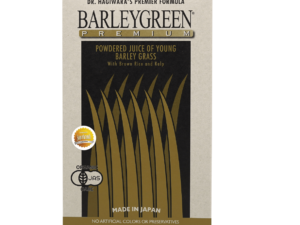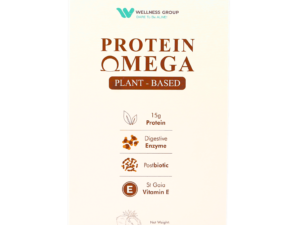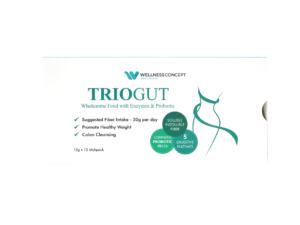Probiotics vs Fermented Foods: Wellness Group Explains
What if your favorite tangy snack isn’t doing what you think it is? Many people assume foods like yogurt or kimchi automatically boost gut health, but the truth is more nuanced. This guide breaks down the science behind two popular wellness trends—and why they’re not interchangeable.
Live cultures transform ordinary ingredients through natural processes. For example, milk becomes cheese, gaining new textures and flavors. These changes can enhance nutritional value, but not all products meet the strict criteria for delivering proven health benefits.
Unlike everyday foods, certain products undergo rigorous testing to validate their impact. Experts emphasize that only strains backed by human studies qualify as true solutions for specific needs. Want to know which option aligns with your goals? Targeted supplements might surprise you.
Key Takeaways
- Live cultures alter taste, texture, and nutrients in everyday ingredients
- Only products with clinically tested strains offer guaranteed benefits
- Many fermented items lack sufficient microbes to qualify as therapeutic
- Combining both approaches can support digestive wellness
- Always check labels for strain specificity and dosage details
Introduction to Probiotics and Fermented Foods
Behind every thriving gut ecosystem lie two fascinating concepts. While both involve living microbes, their roles differ significantly in science and nutrition.
What Are Probiotics?

Click to LEARN MORE
The World Health Organization defines these as live microorganisms that deliver specific health benefits when consumed properly. Each strain—like Lactobacillus rhamnosus GG—has unique effects validated through clinical trials. Proper labeling showing genus, species, and strain helps identify quality products.
What Defines Fermented Foods?
These items undergo natural transformation by bacteria or yeasts. Yogurt and kimchi develop tangy flavors while gaining nutrients during this ancient preservation method. However, many lose active cultures during processing or storage.
| Feature | Probiotics | Fermented Foods |
|---|---|---|
| Core Purpose | Targeted health support | Flavor enhancement & preservation |
| Microbe Count | Guaranteed live cultures | Varies by preparation |
| Regulation | Strain-specific labeling | No standardized requirements |
Traditional Malaysian tempeh showcases fermentation’s cultural roots. Yet modern processing sometimes reduces its microbial benefits compared to specially formulated supplements.
Understanding Fermentation: History and Process
Imagine a kitchen from 7,000 years ago—no refrigerators, no preservatives. Our ancestors discovered that invisible helpers could transform perishable ingredients into lasting nourishment. This alchemy of microbes laid the foundation for culinary traditions across continents.

Traditional Fermentation Methods
Early civilizations harnessed wild bacteria and yeasts through trial and error. Clay pots buried underground created ideal conditions for cultures to thrive. Korean households still ferment cabbage in stone jars, while Ethiopian communities use woven baskets for ergo production.
These methods achieved two goals: preserving harvests and enhancing taste. The tangy zing in Indonesian rusip fish sauce or Russian kefir developed naturally through microbial growth. Each region’s climate influenced which organisms dominated the process.
Modern Techniques in Fermentation
Today’s labs use precision tools to replicate ancient wisdom. Controlled temperatures and pH meters ensure consistent results across batches. Specific starter cultures replace unpredictable wild microbes, reducing spoilage risks.
Industrial-scale fermentation produces everything from vitamins to meat alternatives. Sensors track gas production and acidity levels in real time. This blend of tradition and technology creates safer products while retaining fermentation’s nutritional benefits.
Key Differences: Probiotics vs Fermented Foods
Not all gut-friendly options work the same way. While both categories involve microorganisms, their paths to your plate—and their effects on your body—follow different scientific roads.
Definition and Role in Health
One requires clinical proof; the other relies on tradition. Products with specific microbial strains must demonstrate measurable improvements in human trials. Think of these as precision tools designed for particular wellness goals.
Traditional cultured items, however, often lack this rigorous validation. As researcher Dr. Mei Ling Tan notes: “Even widely consumed items like tempeh may lose their live cultures during modern production methods.”
| Feature | Clinically Validated Options | Traditional Cultured Items |
|---|---|---|
| Scientific Validation | Required | Optional |
| Live Microbes at Consumption | Guaranteed | Often absent |
| Regulatory Standards | Strict | None |
Comparative Analysis of Benefits
A 2022 review in Gut Microbes highlights why strain specificity matters: “Lactobacillus acidophilus LA-5 improves lactose digestion, while other strains from the same species show no effect.”
This precision contrasts with most cultured products. Baked sourdough or pasteurized kimchi might offer great taste but zero active microbes. Always check labels for:
- Microbial colony counts (CFUs)
- Expiration dates
- Storage requirements
For Malaysian consumers seeking targeted support, clinically tested options often provide more reliable results. Those prioritizing general dietary diversity can enjoy both—just understand what each brings to your table.
Health Benefits and Scientific Perspectives
Modern science is unlocking how microscopic allies shape our well-being. Over 1,800 human trials reveal fascinating connections between microbial balance and bodily functions.

Clinical Evidence and Research Findings
Studies show specific strains excel in particular scenarios. For example, Lactobacillus rhamnosus GG reduces antibiotic-related diarrhea by 42% in children. Dr. Anisa Rahman notes: “Targeted microbial therapy prevents 60% of C. difficile recurrences in Malaysian hospitals.”
| Feature | Traditional Remedies | Clinically Tested Options |
|---|---|---|
| Scientific Validation | Anecdotal | Peer-reviewed studies |
| Microbial Guarantee | Unverified | 10⁹ CFU minimum |
| Primary Use | General wellness | Disease prevention |
Impact on Gut Microbiota and the Immune System
A balanced gut ecosystem acts as the body’s security team. Beneficial bacteria crowd out harmful invaders while training immune cells. Research shows daily use strengthens defenses against common colds by 27%.
Nutritional Value and Therapeutic Uses
Certain strains break down lactose and improve cholesterol levels. Lactic acid bacteria from traditional preparations show antibiotic-like effects without side effects. For Malaysians managing chronic disease, these findings offer new dietary strategies.
Key considerations when choosing products:
- CFU counts matching clinical trial dosages
- Strain specificity for desired outcomes
- Expiration dates ensuring live cultures
Dietary Application and Wellness Group Insights
Balancing modern nutrition with microbial benefits doesn’t require complicated routines. Simple daily choices can significantly influence digestive wellness when made with proper guidance.
Smart Integration for Daily Nutrition
Start by identifying items with live cultures that survive processing. Look for phrases like “contains active strains” or check CFU counts on labels. Yogurt with Lactobacillus rhamnosus or Bifidobacterium-enhanced milk products make excellent breakfast additions.
For those exploring specific microbial strains, chocolate bars with L. paracasei offer tasty alternatives. Most people tolerate these options well, though temporary bloating may occur during initial use.
Expert Guidance for Optimal Choices
Wellness Group’s nutrition specialists help Malaysians navigate this landscape. They assess individual needs to recommend:
- Cultured dairy products matching lactose tolerance levels
- Supplement forms for travelers or busy professionals
- Local fermented items with verified microbial content
Connect via WhatsApp at +60123822655 Monday-Friday (9:30 am-6:30 pm) or Saturday (10 am-5 pm). Their team clarifies label claims, compares dietary supplements, and explains storage requirements for maximum potency.
Remember: Consistency matters more than quantity. Small daily portions of properly prepared items often yield better results than occasional large servings. Pair these choices with fiber-rich foods to create an ideal environment for microbial growth.
Conclusion
Navigating the world of gut health requires understanding both science and tradition. Traditional cultured items bring cultural richness and unique flavors to meals, while clinically tested options offer precision support. Checking labels for live cultures and colony counts ensures you get what your body needs.
Pairing these approaches creates a balanced strategy. Enjoy tangy favorites for their taste and nutrients, but consider targeted probiotic supplements when specific benefits matter. Research shows certain strains thrive better in controlled formulations than in everyday items.
For lasting wellness, prioritize products backed by human trials. Quality matters more than quantity—small daily doses of verified microorganisms often outperform inconsistent choices. Always consult experts to match solutions with personal goals while honoring culinary heritage.
FAQ
How do live microorganisms in certain products support digestion?
Many dietary items like yogurt or kefir contain beneficial microbes that may improve gut health. These strains help balance the microbiota, aiding nutrient absorption and reducing digestive discomfort.
Can items like sauerkraut or kimchi replace supplements?
While fermented options provide natural cultures, their microbial content varies. Supplements offer standardized doses of specific strains, making them more reliable for targeted therapeutic uses.
Are there risks linked to consuming cultured products regularly?
Most people tolerate them well, but overconsumption might cause bloating. Those with weakened immune systems should consult a healthcare provider before adding large quantities to their diet.
Does heat processing affect the benefits of these items?
High temperatures during cooking or pasteurization can destroy live cultures. For maximum impact, choose raw, unpasteurized versions labeled with “active” or “live” strains.
How does fermentation alter a food’s nutritional profile?
The process breaks down sugars and enhances vitamin levels, like B vitamins in tempeh. It also creates enzymes and organic acids that boost shelf life and digestibility.
What role do prebiotics play in supporting gut health?
Prebiotics, found in foods like garlic or oats, act as fuel for beneficial bacteria. Pairing them with cultured items or supplements can amplify their growth and effectiveness.
Are all fermented items considered probiotic-rich?
Not necessarily. Some undergo processing that removes live microbes. Look for labels mentioning “contains live cultures” to ensure you’re getting active strains.

Khloe Tan
Khloe Tan is a Certified Nutritionist, Corporate Wellness Trainer, and Holistic Health Specialist with over 15 years of experience in the health and wellness industry. She has delivered more than 100 talks nationwide, inspiring and educating diverse audiences on nutrition, lifestyle, and sustainable wellness. Her work has positively impacted over 3,000 lives, and she continues to champion holistic approaches to well-being in both corporate and personal settings.
Feature Product
-
Hydrogen Water FIlter/Generator
H2zen Portable (White/ Blue)
RM2,600.00 Add to cart Buy NowRated 0 out of 5





